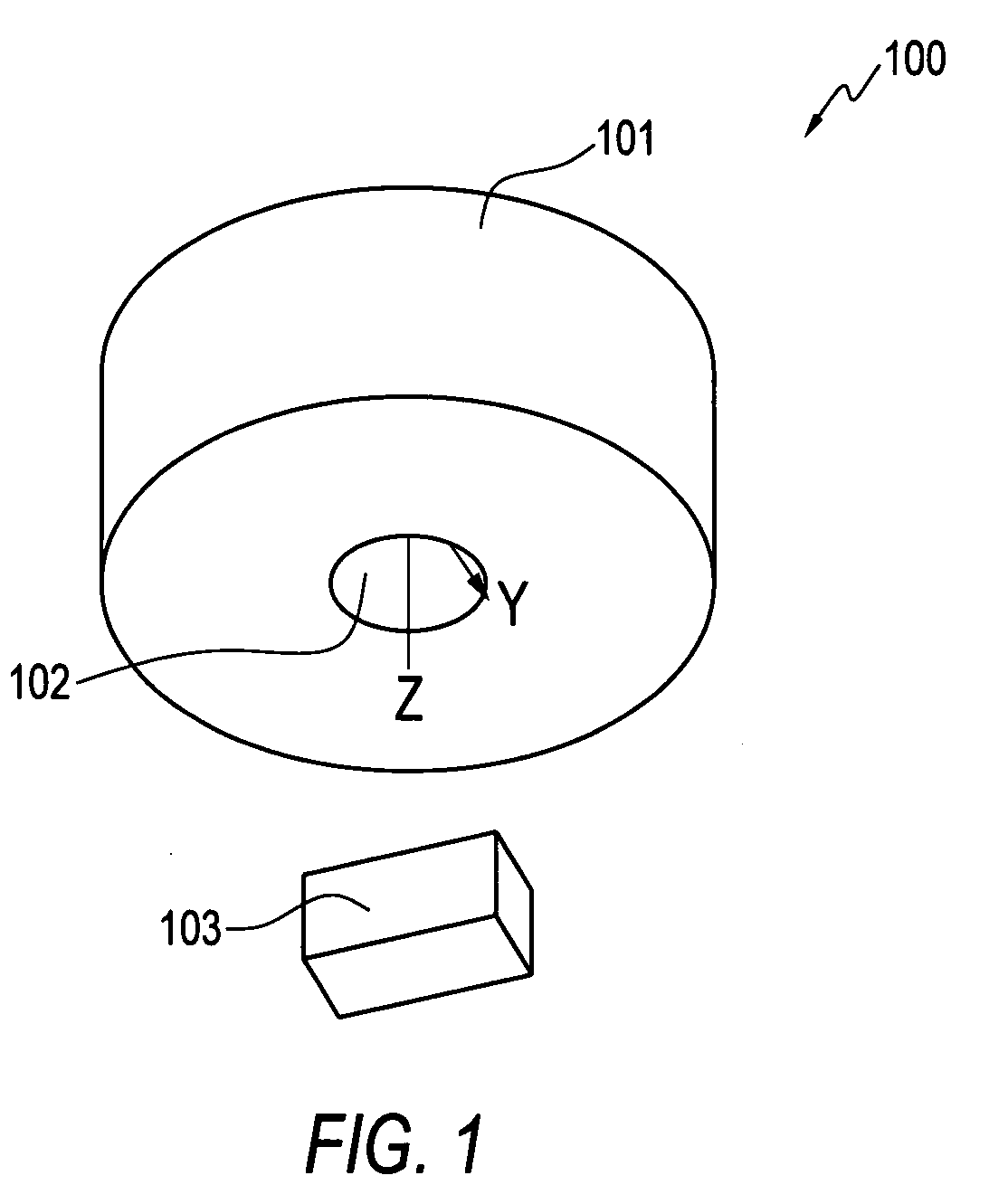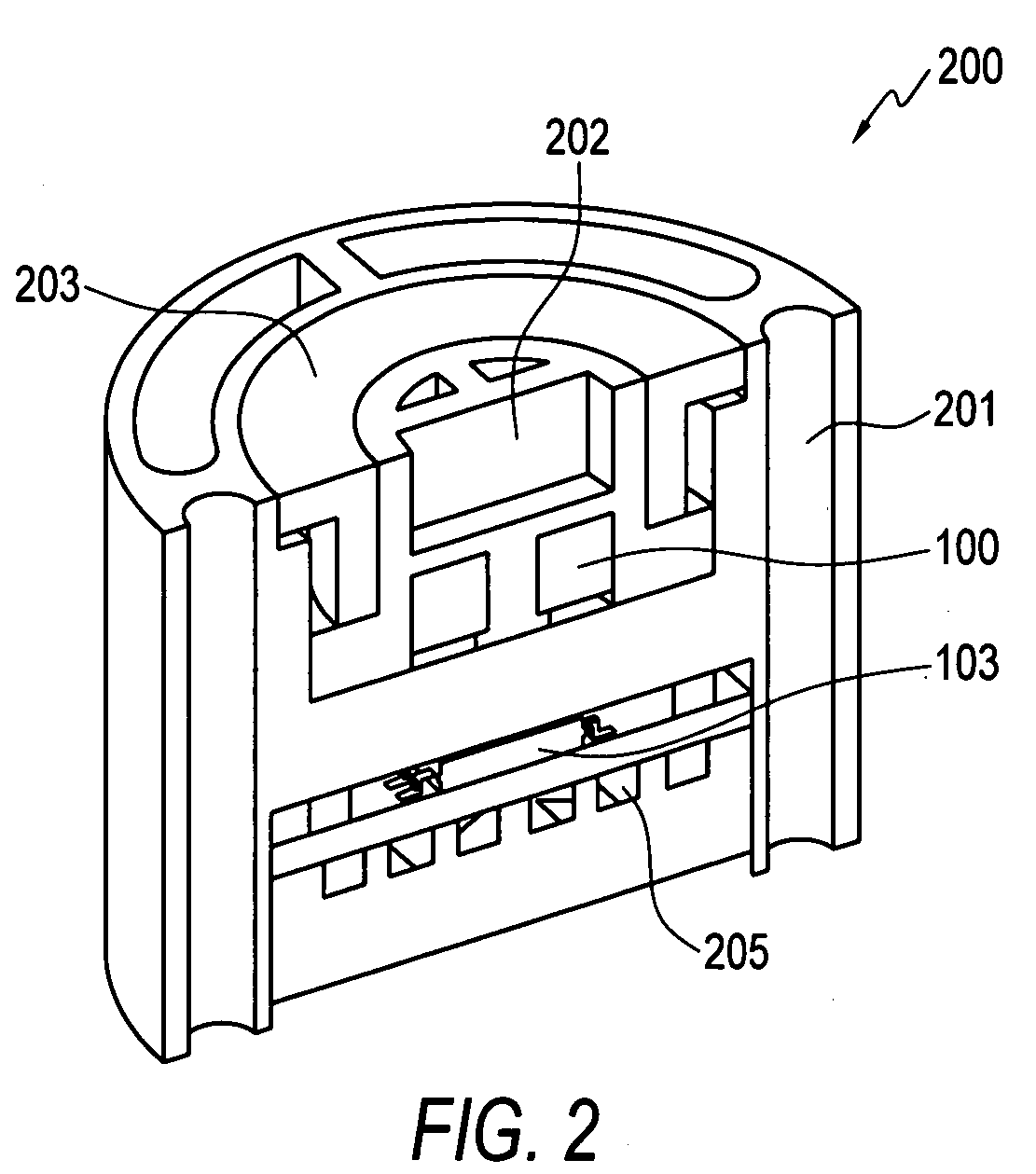Robust solution for mitigating eccentricity in a rotary sensor apparatus
- Summary
- Abstract
- Description
- Claims
- Application Information
AI Technical Summary
Benefits of technology
Problems solved by technology
Method used
Image
Examples
Embodiment Construction
[0024]The particular values and configurations discussed in these non-limiting examples can be varied and are cited merely to illustrate at least one embodiment and are not intended to limit the scope thereof.
[0025]Referring to FIG. 1, a perspective view of a hollow cylindrical magnet 100 is illustrated, as a robust solution for eccentricity issues in rotary sensor applications, in accordance with a preferred embodiment. The hollow cylindrical magnet 100 includes a magnetic cylindrical surface (shell) 101 with a hollow cavity 102. A rotary sensing element such as, for example, a AMR / Hall chip 103 can be arranged in a position below the cylindrical magnet 101. The rotary sensing element or Hall / AMR chip 103 comprises a sensing element (not shown in figure) fitted in a hybrid integrated circuit.
[0026]FIG. 2 illustrates a cross-sectional view of a rotary position sensor apparatus 200 apparatus equipped with the hollow cylindrical magnet 100 depicted in FIG. 1, in accordance with a pref...
PUM
 Login to View More
Login to View More Abstract
Description
Claims
Application Information
 Login to View More
Login to View More - R&D
- Intellectual Property
- Life Sciences
- Materials
- Tech Scout
- Unparalleled Data Quality
- Higher Quality Content
- 60% Fewer Hallucinations
Browse by: Latest US Patents, China's latest patents, Technical Efficacy Thesaurus, Application Domain, Technology Topic, Popular Technical Reports.
© 2025 PatSnap. All rights reserved.Legal|Privacy policy|Modern Slavery Act Transparency Statement|Sitemap|About US| Contact US: help@patsnap.com



